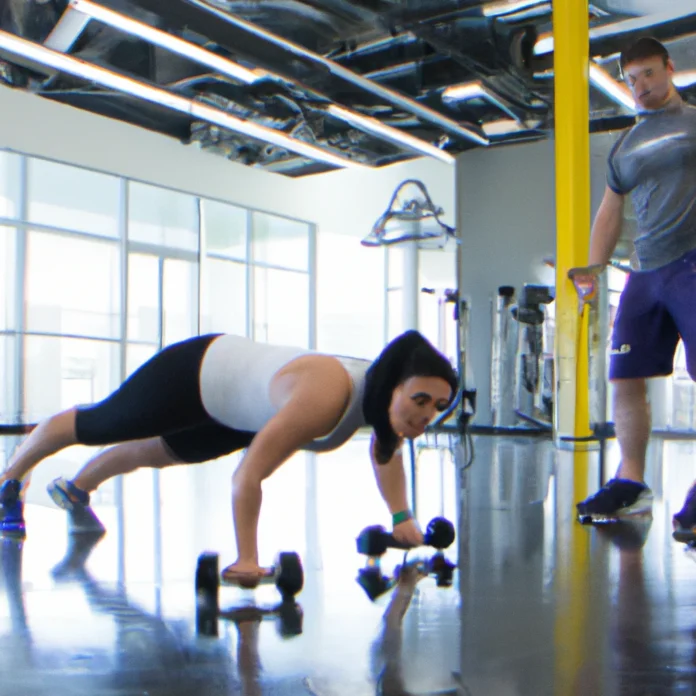How to Lose Fat While Keeping Your Hard-Earned Muscle
Achieving the goal of losing fat while preserving muscle mass is a challenge that many fitness enthusiasts face. It requires a well-balanced approach that combines effective nutrition, proper exercise, and a strategic mindset. In this comprehensive guide, we will explore the most effective methods to help you reach your fitness goals while ensuring that your hard-earned muscle remains intact.
Understanding the Basics of Fat Loss and Muscle Preservation
To lose fat, we must create a calorie deficit, meaning we consume fewer calories than we burn. However, doing so without sacrificing muscle is where many falter. It’s essential to understand that muscle is metabolically active tissue, requiring adequate energy and nutrients to thrive. Therefore, the strategies we adopt must focus on maintaining this precious muscle while shedding excess fat.
The Role of Nutrition in Fat Loss
Nutrition is the cornerstone of any successful fat loss plan. A well-structured diet will help ensure that your body has the necessary nutrients to fuel workouts and recovery while promoting fat loss.
Caloric Needs and Deficit
Establishing your daily caloric needs is the first step. Utilize a calorie calculator to determine your Total Daily Energy Expenditure (TDEE) based on your age, sex, weight, height, and activity level. Aim for a moderate caloric deficit of 500 calories per day, which can lead to a safe weight loss of approximately 1 pound per week.
Macronutrient Ratios
Balancing your macronutrients is vital. A common recommendation is:
- Protein: 1.2 to 2.2 grams per kilogram of body weight, depending on your activity level.
- Fats: 20-35% of your total caloric intake.
- Carbohydrates: The remaining calories after protein and fat are allocated to carbohydrates.
This structure supports muscle preservation while allowing for fat loss.
The Importance of Protein
Protein plays a critical role in muscle preservation during fat loss. It helps repair and rebuild muscle fibers that may be damaged during workouts. Incorporating high-quality protein sources, such as lean meats, fish, eggs, dairy, legumes, and plant-based proteins, can support your muscle maintenance goals.
Hydration and Its Impact on Fat Loss
Staying adequately hydrated is often overlooked in fat loss strategies. Water is essential for overall metabolic processes, including fat oxidation. Aim for at least 2-3 liters of water per day, adjusting based on activity levels and climate.
Exercise Strategies for Fat Loss and Muscle Preservation
Exercise is a crucial component in the journey of losing fat while retaining muscle. A blend of resistance training and cardiovascular work can yield the best results.
Strength Training: The Foundation for Muscle Maintenance
Engaging in regular strength training is paramount. Focus on compound movements such as squats, deadlifts, bench presses, and rows, as they recruit multiple muscle groups. Aim for at least 3-4 sessions per week, incorporating progressive overload to challenge your muscles continually.
Rep Ranges and Volume
To preserve muscle, it’s important to use an appropriate rep range. Training with weights that allow for 6-12 reps per set encourages hypertrophy and strength maintenance. Volume, or the total amount of weight lifted during a workout, should also be prioritized to ensure that muscles are adequately stimulated.
Incorporating Cardiovascular Exercise
Cardiovascular exercise can aid in creating the caloric deficit necessary for fat loss. However, it’s essential to find a balance so that it does not interfere with muscle recovery. Aim for 2-3 sessions of moderate-intensity cardio per week, such as cycling or brisk walking, in addition to your strength training.
Implementing Recovery Strategies
Recovery is often neglected but is crucial for muscle preservation and overall performance. Incorporate rest days into your routine and prioritize sleep. Aim for 7-9 hours of quality sleep per night, as this is when most muscle repair occurs.
The Role of Supplements in Muscle Preservation
Supplements can be a useful addition to your diet to help maintain muscle during fat loss. Consider incorporating:
- Protein Powder: A convenient way to ensure adequate protein intake.
- Branched-Chain Amino Acids (BCAAs): May help reduce muscle soreness and support recovery.
- Creatine: Aids in strength and muscle retention during a caloric deficit.
Mindset and Motivation for Fat Loss
Maintaining a positive mindset is essential during any fat loss journey. Set realistic goals and track your progress to stay motivated. Surround yourself with supportive individuals who share similar fitness aspirations.
Staying Consistent and Overcoming Plateaus
Consistency is the key to success. Understand that plateaus are a normal part of the process. When progress stalls, consider reassessing your caloric intake, adjusting workout intensity, or changing your exercise routine to reignite fat loss.
Buy MyProtein Products
For those looking to optimize their nutrition and enhance their fat loss journey, we recommend checking out MyProtein products. With a wide range of high-quality supplements designed to support your fitness goals, MyProtein can help you stay on track. Visit the following link to explore their offerings: Buy MyProtein Products.
Conclusion: Your Path to Success
Losing fat while preserving muscle is undoubtedly a challenging endeavor, but with the right strategies in place, it is entirely achievable. Remember, “Strength doesn’t come from what you can do. It comes from overcoming the things you once thought you couldn’t.” Stay dedicated, be patient, and follow the guidelines laid out in this article.
For more information on lifestyle and health tips, visit Lifestyle Home.

